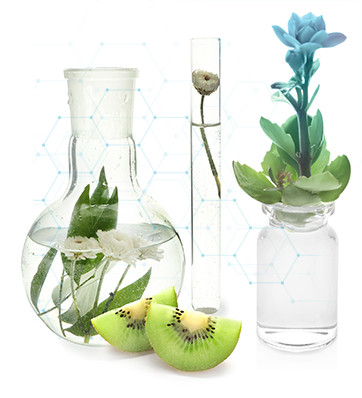RIFM Research
RIFM’s research program provides the foundation for the institute’s longstanding commitment to framing research goals that pursue the safety of fragrance ingredients and enhance the tools used in safety assessments. Many of RIFM’s research projects have examined and developed New Approach Methodologies (NAMs) to enhance understanding of the safety of fragrance ingredients without performing unethical animal testing or sacrificing human health and environmental protection.
RIFM’s research seeks to:

A cornerstone of the RIFM research program has been exposure modeling, which forms the backbone of all safety assessments. RIFM and Creme Global, a scientific modeling, data analytics, and computing company, collaborated to develop an aggregate exposure model for fragrance materials (i.e., the total exposure coming from all different sources).
The Creme/RIFM Aggregate Exposure Model looks at the exposure resulting from different fragrance materials used across a range of cosmetic, personal, household, and air care products. The model has helped refine the fragrance industry’s assessment of materials and has made a substantial impact on both the improvement of consumer safety of fragrances and the reduction of animal testing.
All of RIFM’s research is reviewed and must be approved by the Expert Panel for Fragrance Safety , a self-governing, rotating team of independent academics with no ties to the fragrance industry, for a second layer of scientific objectivity before submission to peer-reviewed journals.
Latest publications
All of RIFM’s published, peer-reviewed research is available via open access at the Fragrance Material Safety Resource Center